Ferrous (Fe) and non-ferrous alloys represent two distinct categories, each with unique applications and properties. Knowing the differences between these two types is very important to choose the right material for your particular project. Today we will see uses, characteristics and advantages of both Fe and non-Fe alloys.
What are Ferrous(Fe) Metals?
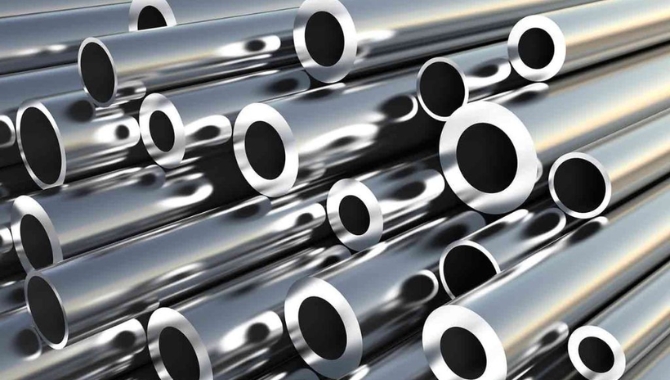
Iron or ferrous alloys are alloys with iron as the main component. They generally have carbon and other elements mixed in to boost certain traits. These metals are tough, magnetic and can corrode easily. About 90% of all metals made worldwide are ferrous which makes these metals super important in many fields. You’ll find ferrous metals in industries like manufacturing, automotive and construction.
What are Non-Ferrous Metals?
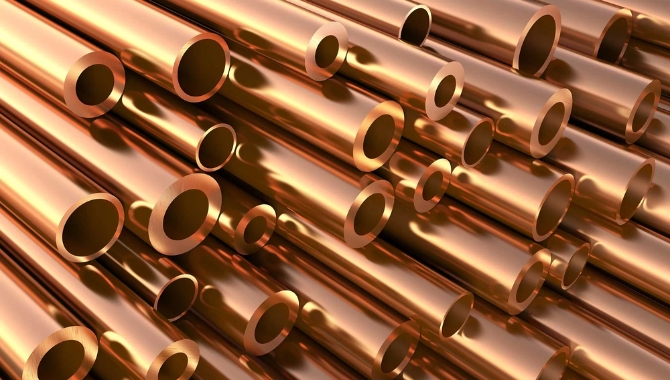
Non-Fe alloys, unlike their Fe counterparts, do not contain iron as their main component. These materials, which include copper, aluminum, zinc, lead and nickel possess distinct characteristics. They provide excellent conductivity, high resistance to corrosion and are lightweight.
Although they cost more than ferrous metals, industries value non-ferrous materials for their specific attributes. The production process commonly involves extracting these metals from minerals such as silicates, sulfides and carbonates. Refinement usually follows through electrolysis.
Top 5 Differences between Ferrous and Non Ferrous Metals
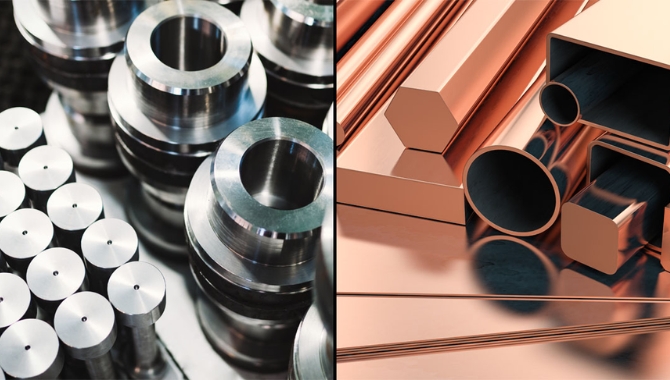
Fe and non-Fe metals have unique features. In this section, we will look at those differences that set these two metal types apart.
1. Composition
Both these metals have completely different compositions. Iron is the primary element in ferrous metals, with carbon content ranging from 0.03% to 2.14%. Conversely, non-ferrous metals either lack iron completely or contain less than 1% iron by weight. This basic compositional difference results in different properties for each metal type.
2. Corrosion Resistance
Another key property that distinguishes ferrous metals from non-Fe metals is their ability to resist corrosion. Non-ferrous metals generally have high corrosion resistance because they lack iron. This makes them perfect for use in harsh environments. For example, aluminum forms a protective oxide layer that increases its resistance to corrosion.
Fe metals, however, are more susceptible to corrosion and rust particularly when exposed to oxygen and moisture. But some ferrous metals, like stainless steel, contain chromium that makes a passive layer which helps improve their rust resistance ability.
3. Magnetism
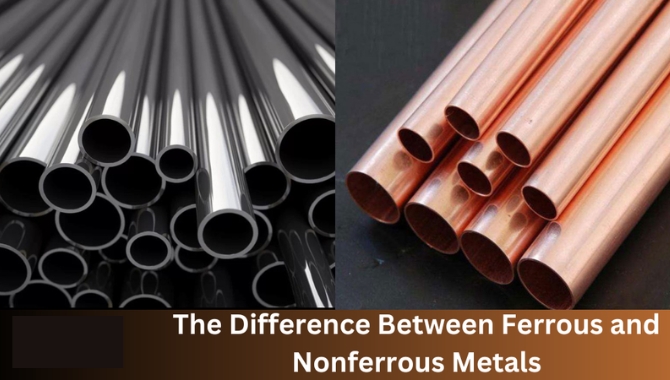
Magnetism distinguishes Fe from non-Fe metals in notable ways. Fe metals, which contain iron, display magnetic properties because of their atomic structure. This characteristic makes them the best for transformers, electrical motors and other devices that need magnetic fields.
On the flip side, non-fe metals don’t attract magnets. This non-magnetic quality is very useful in electronics and electrical applications where magnetic interference could cause problems. For example, copper is outstanding for electronic components and wiring because it does not react to magnetic fields at all.
4. Weight and Density
Both metals differ greatly in weight and density. Fe metals with their iron content, generally weigh more and have a higher density than non-Fe options. Steel, a common ferrous metal, has a density of approximately 7.8 g/cm³.
In contrast, aluminum, a widely used non-Fe metal, weighs only 2.7 g/cm³. This substantial difference influences material selection across various industries. The automotive and aerospace sectors mostly choose non-Fe metals due to their lightweight properties which improve fuel efficiency and overall performance.
5. Cost Considerations
Price points differ significantly between Fe and non- Fe metals. Fe metals are usually more affordable, thanks to their simpler production methods and abundance. The widespread availability of iron ore helps keep their costs low.
On the other hand, non-Fe metals like titanium, copper and aluminum are more expensive. This higher cost is mainly because of their relative more complex extraction processes and scarcity.
However, when deciding between Fe and non-Fe options, it’s very important to consider more than just the initial costs. Factors such as maintenance needs, longevity and specific application requirements should be evaluated to determine the most cost-effective choice for a particular project.
Different Applications of Fe and Non-Fe Metals
Fe and non-Fe metals play important roles in many industries because of their unique properties. Let’s see how these materials are used across different sectors.
Applications of Fe Metals
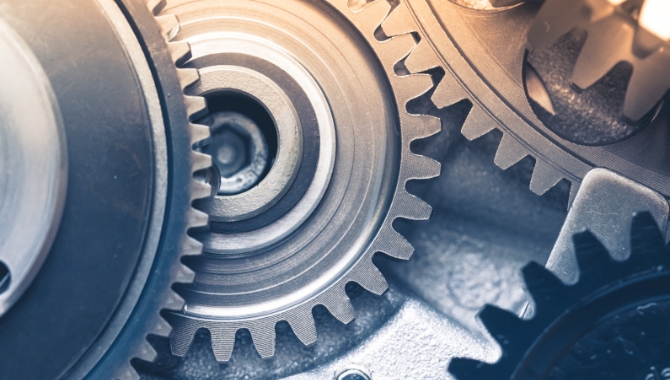
Construction
The construction sector greatly depends on ferrous metals particularly steel. These materials shine in load-bearing applications and give high tensile strength. Reinforced concrete, structural frameworks and different building components mostly use steel because of its robustness.
Automotive Industry
Fe metals are dominant in automotive manufacturing with high-strength steel being the core of vehicle production. Car body panels and frames are usually made from this material. Brake components and engine blocks mostly use cast iron. The automotive industry values these metals for their safety features, durability and cost-effectiveness in large-scale production.
Manufacturing Machinery
Fe metals are crucial for industrial equipment. Tool steel, known for being tough, is used a lot in cutting dies and tools. Heavy machinery mostly utilizes carbon steel and cast iron. These metals are strong and don’t wear out easily in tough factory settings.
Pipelines and Rail Tracks
The transportation of water, oil and gas over long distances depends on steel pipelines. This adaptable metal’s durability and high tensile strength make it perfect for these uses. Similarly, railroad infrastructure takes advantage of steel’s extraordinary longevity and load-bearing capacity.
Shipbuilding
Steel is very important in modern shipbuilding. Shipyards use this strong material for key structural parts and hull construction. Areas under high mechanical stress often have high tensile steel, while parts exposed to harsh marine conditions usually use corrosion-resistant stainless steel.
Applications of Non Fe Metals
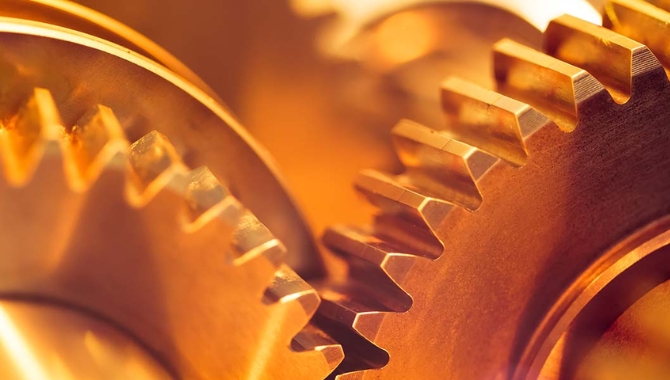
Aerospace Industry
Durable and lightweight non-Fe metals are indispensable in aerospace industry. Aircraft manufacturers depend on aluminum alloys for frames and body panels, taking advantage of their high strength and low weight. Landing gear and jet engines frequently use titanium for its extraordinary heat resistance and strength.
Electrical and Electronics Industry
Copper is the king in this sector because of its outstanding electrical conductivity. From circuit boards and wiring to connectors, copper parts guarantee efficient power transmission. For cost-effective alternatives in heat sinks and power lines, many manufacturers pick aluminum.
Automotive Sector
Vehicle efficiency and performance greatly benefit from non-fe metals. Aluminum reduces overall weight in engine components and body panels, while copper powers electrical systems. High-performance parts mostly use titanium and take advantage of its amazing strength-to-weight ratio.
Construction Industry
Non-fe metals play an important role in modern building practices. Architects prefer aluminum for roofing and window frames due to its light weight and corrosion resistance. Copper is used in decorative elements and plumbing systems. To protect steel structures in harsh environments, builders often apply zinc galvanization.
Medical Devices
The medical field also takes advantage from the distinctive properties of many non-Fe metals. Titanium’s biocompatibility makes it the best choice for surgical tools and implants. Lightweight mobility aids use aluminum a lot. Healthcare facilities appreciate copper’s antimicrobial properties for touch surfaces to improve hygiene standards.
Conclusion

In short, Fe and non-Fe metals have unique characteristics. Ferrous metals containing iron are renowned for their magnetism, strength and cost-effectiveness. In contrast, non-Fe metals excel in conductivity, corrosion resistance and lightweight properties. Understanding these differences is very important for selecting the right material for specific projects.
If you need expert metal fabrication services customized to your project needs, contact KDM Fabrication today. They have 10+ years of experience in metal fabrication and have worked with hundreds of clients worldwide.
FAQs
Can you use ferrous metals in marine settings?
Yes, you can use Fe metals in sea environments with special protection treatments. Stainless steel creates a protective oxide layer that increases its resistance to corrosion, so it can be used as it in marine applications. But other Fe metals need treatments like hot-dip galvanizing or special coatings to avoid fast rusting in salty water.
Which metals are better for the environment?
Non-Fe metals such as copper and aluminum are generally more environment friendly metals. They’re easy to recycle and need less energy to do the recycling. Steel is ferrous, but it is 100% recyclable like non-ferrous metals and it lasts forever. This property makes steel a sustainable choice too.
Why do Fe metals rust faster than non-Fe ones?
Ferrous metals rust quicker because they contain iron. When iron meets water and air, it reacts with them and forms iron oxide which is called rust. Non-Fe metals don’t have iron usually, so they don’t rust. Many non-Fe metals actually form a protective layer that stops further corrosion.




